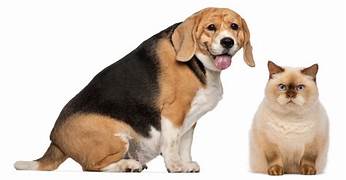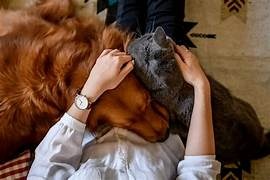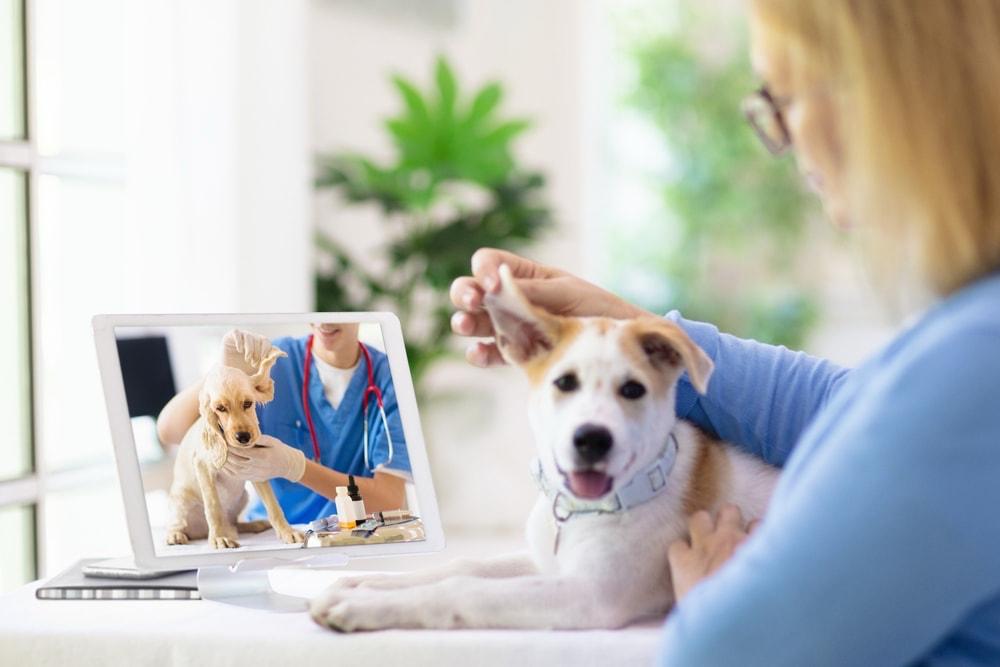
Pet Obesity Is on the Rise—Here's How to Fight It.
Pet obesity is a growing health crisis affecting over half of dogs and cats worldwide. Linked to overfeeding, poor diet, and inactivity, it significantly shortens pets' lifespans and increases disease risk. This article explores the causes, consequences, and actionable strategies to help your furry companions lose weight safely and live healthier, more active lives with the support of informed, caring owners.
🐶 Pet Star
47 min read · 4, Jul 2025

Introduction
Pet obesity has become one of the most pressing health concerns among domesticated animals globally. Much like the growing obesity epidemic in humans, our furry companions are increasingly falling prey to sedentary lifestyles, improper diets, and overindulgent owners. According to recent veterinary studies, over 55% of dogs and 60% of cats in the United States alone are classified as overweight or obese. While those extra pounds may seem harmless or even cute, they significantly reduce a pet’s quality of life and lifespan, while increasing the risk of numerous chronic diseases.
This article explores the causes, health risks, diagnosis, and effective strategies for combating pet obesity. Whether you're a dog lover, a cat parent, or an owner of small animals, it’s time to prioritize healthy habits that keep your pets fit, happy, and active.
Understanding Pet Obesity: What It Really Means
Obesity in pets is defined as excessive fat accumulation that may impair health. It's typically diagnosed when a pet's body weight is 20% or more above its ideal weight. While all breeds can be affected, certain types—like Labrador Retrievers, Beagles, and Persian cats—are genetically predisposed to weight gain.
Unlike occasional weight fluctuations, obesity is a chronic condition with complex causes. It doesn’t only result from overeating but is influenced by lifestyle, metabolism, age, activity level, hormonal imbalances, and even emotional well-being.
Major Causes of Pet Obesity
- Overfeeding and Free-Feeding
- Giving too many treats or table scraps.
- Leaving food out all day (especially for cats) leads to mindless munching.
- Poor Diet Quality
- Feeding high-calorie commercial foods.
- Unbalanced homemade diets lacking essential nutrients.
- Lack of Physical Activity
- Indoor pets with limited exercise routines.
- Pets left alone for long hours without stimulation.
- Age and Neutering
- Older animals are less active and burn fewer calories.
- Neutered pets often have reduced metabolic rates, increasing the risk of fat storage.
- Medical Conditions
- Hypothyroidism, Cushing’s disease, and insulinoma can contribute to weight gain.
- Human Behavior
- Owners equating food with affection.
- Lack of awareness about appropriate portion sizes and caloric needs.
Health Risks of Obesity in Pets
Just like in humans, obesity in pets leads to serious medical complications:
- Diabetes mellitus: Common in overweight cats.
- Arthritis and joint problems: Excess weight strains joints and accelerates wear.
- Respiratory distress: Fat accumulation affects breathing efficiency.
- Heart disease and hypertension.
- Hepatic lipidosis (fatty liver disease) in cats.
- Heat intolerance and reduced mobility.
- Reduced immune function and increased risk of infections.
- Shortened lifespan: Obese pets can live 2.5 years less than healthy-weight counterparts.
Signs Your Pet May Be Obese
- You can’t easily feel ribs under a thick fat layer.
- No visible waist when viewed from above.
- Sagging abdomen or fat deposits around neck and limbs.
- Difficulty walking, running, or climbing stairs.
- Heavy breathing after minor activity.
- Reluctance to exercise or play.
- Excessive sleeping and lethargy.
Regular veterinary check-ups and Body Condition Score (BCS) assessments can help track and manage your pet’s weight accurately.
Steps to Fight Pet Obesity
1. Visit the Veterinarian
Begin with a professional assessment. Your vet will:
- Check for underlying health conditions.
- Recommend an ideal weight target.
- Help formulate a weight loss plan tailored to your pet’s needs.
2. Measure and Monitor Food Intake
- Use measuring cups or digital scales for precise portioning.
- Feed at specific times—avoid free-feeding.
- Check pet food labels for caloric content and feeding guidelines.
3. Choose Nutrient-Rich, Calorie-Appropriate Food
- Pick formulas labeled “weight management” or “light.”
- Prioritize high-protein, low-fat, high-fiber diets.
- Avoid feeding human food unless vet-approved.
4. Limit Treats and Table Scraps
- Treats should account for no more than 10% of daily caloric intake.
- Choose low-calorie options like green beans, carrots, or commercial healthy treats.
- Replace treat rewards with playtime or affection.
5. Encourage Daily Physical Activity
- Walks, play sessions, and toys that stimulate movement are essential.
- Use puzzle feeders or hide food to make mealtimes interactive.
- Cats benefit from laser pointers, feather toys, and climbing trees.
- Dogs enjoy fetch, tug-of-war, and agility training.
6. Track Progress
- Weigh your pet monthly and record the weight.
- Adjust the diet or exercise plan based on results and vet feedback.
- Celebrate milestones—but not with food!
7. Be Consistent and Patient
Weight loss is a slow, steady process. Crash diets or excessive restrictions can cause more harm than good. Instead, aim for 1-2% weight loss per week.
Breed-Specific Considerations
Some breeds are more susceptible to obesity and require proactive management:
- Labradors have a genetic mutation affecting hunger regulation.
- Persian and British Shorthair cats are prone to inactivity.
- Pugs, Bulldogs, and Dachshunds face breathing/joint challenges with even mild weight gain.
Breed-specific vet advice is crucial for creating a safe and effective plan.
Psychological Factors in Pet Obesity
Overweight pets often suffer from:
- Depression due to reduced activity or pain.
- Boredom, leading to stress-eating or food-seeking behavior.
- Behavioral changes, such as irritability or withdrawal.
Creating a stimulating and emotionally enriching environment is as important as managing physical health.
How Pet Owners Can Stay Accountable
- Set realistic goals and stick to the plan.
- Involve all family members to avoid mixed messages (like extra treats).
- Maintain an activity journal or use pet fitness trackers.
- Reward yourself (not the pet) for milestones using non-food means like toys, grooming, or adventure days.
Preventing Obesity in the First Place
- Start young: Teach healthy eating habits early.
- Regular checkups: Annual or biannual vet visits.
- Monitor post-neuter weight gain proactively.
- Learn to read labels and count pet calories.
- Use slow feeders to reduce gulping and overeating.
The rise in pet obesity is a growing concern among veterinarians and pet owners worldwide, with more than half of all dogs and cats now classified as overweight or obese, leading to a cascade of health complications and a decreased quality of life for our beloved companions. While the sight of a chubby dog or a plump cat might appear adorable, the excess weight they carry is anything but cute—it’s a serious medical issue that shortens lifespan and increases vulnerability to a host of conditions such as diabetes, arthritis, heart disease, respiratory problems, and even cancer. The causes behind this epidemic are multi-faceted, with overfeeding and lack of exercise being the most apparent contributors. Many pet owners unintentionally harm their pets by offering large portions, excessive treats, or constant access to food, especially when combined with a sedentary lifestyle that includes long hours of inactivity while the owner is away or distracted. The problem is further complicated by other factors such as aging, hormonal changes (especially post-neutering), genetic predisposition, and underlying medical conditions like hypothyroidism or Cushing’s disease. In addition to physical causes, there’s also a psychological component, with pets sometimes overeating out of boredom or anxiety, and owners using food as a primary method of affection, reinforcing unhealthy habits. Diagnosing pet obesity begins with observing visual cues such as the inability to feel the ribs easily, the absence of a defined waistline, a drooping abdomen, and overall lethargy or mobility issues, but the most accurate evaluation is done by a veterinarian using tools like the Body Condition Score (BCS). Once diagnosed, fighting pet obesity requires a comprehensive approach starting with a veterinary consultation to rule out diseases and set an appropriate weight goal. Owners are then advised to switch to controlled feeding schedules using measured portions and low-calorie diets rich in high-quality proteins and fibers while avoiding calorie-dense treats and table scraps. Instead of rewarding with food, owners should offer affection, toys, and playtime. Encouraging daily exercise tailored to the pet’s age and abilities—such as walks, agility games, or indoor play—helps burn calories and improves cardiovascular and mental health. Puzzle feeders, climbing structures, and interactive toys add both movement and mental stimulation, particularly for indoor pets like cats. Consistency is key, and all household members must be aligned with the plan to avoid mixed messages and sneaky handouts that sabotage progress. Progress should be monitored weekly or monthly with weight check-ins, and any plateaus or regressions should prompt a reevaluation of the diet and activity plan under veterinary guidance. It’s crucial to avoid crash diets or rapid changes, as these can harm the pet’s metabolism and overall health—particularly in cats, who are at risk for hepatic lipidosis if they lose weight too quickly. Patience and persistence go a long way, with even a 1-2% reduction in body weight per week considered safe and sustainable. Preventing obesity from the start is ideal and includes raising awareness among pet owners about proper portion sizes, caloric needs based on breed and age, the impact of spaying and neutering on metabolism, and the importance of regular checkups. Pet food packaging can be misleading, and generic feeding guidelines may not apply to every animal, making individualized veterinary advice essential. Certain breeds require even more vigilance due to genetic tendencies to gain weight, such as Labradors, Beagles, Dachshunds, and Persian cats, who need proactive weight monitoring and controlled environments. Emotionally, obese pets may exhibit signs of depression, disinterest in play, or frustration, and owners often feel guilty or overwhelmed by the effort required to manage weight loss; however, the benefits far outweigh the challenges. A healthy weight means better mobility, improved mood, lower vet bills, and a longer, more vibrant life. Ultimately, tackling pet obesity is not about punishment or deprivation—it’s about making informed, compassionate choices every day that prioritize long-term well-being over momentary indulgence. Owners must understand that loving a pet includes saying "no" when necessary, encouraging active play, and being a responsible steward of their health. With education, commitment, and support from veterinarians, most cases of pet obesity can be reversed or prevented altogether, leading to healthier pets and happier homes.
Pet obesity is becoming an increasingly serious problem around the globe, mirroring the rising rates of human obesity and presenting a range of health risks that are often overlooked by well-meaning but uninformed pet owners. According to recent studies, more than half of household dogs and cats are either overweight or obese, with numbers rising each year due to factors like poor diet, insufficient exercise, and misunderstanding of a pet's caloric needs. Obesity in pets is defined as an accumulation of excessive body fat that leads to a body weight 20% or more above the ideal weight for a given breed and age. The consequences of this condition are far-reaching, reducing life expectancy, diminishing quality of life, and contributing to the onset of chronic diseases such as diabetes mellitus, osteoarthritis, respiratory disorders, cardiovascular issues, liver dysfunction, decreased immune response, and even certain types of cancer. Common causes of pet obesity include overfeeding, frequent treat-giving, lack of physical activity, feeding inappropriate foods, and the habitual use of food as a primary form of affection or behavioral reward. Free-feeding (leaving food out all day) and lack of portion control are major contributors, especially among indoor cats or small-breed dogs who don’t expend much energy. Pets that have been neutered or are aging are also at higher risk, as hormonal changes can decrease metabolism and increase appetite. Certain breeds, such as Labrador Retrievers, Beagles, Dachshunds, Cocker Spaniels, and Persian cats, are genetically more prone to weight gain, and need proactive weight management strategies. Detecting obesity in pets can often be done by noticing physical signs such as the inability to feel ribs easily, the absence of a visible waist, a protruding belly, fat deposits over the back and tail, or general sluggishness and difficulty moving or breathing after minimal exertion. However, the most reliable method for determining your pet’s ideal weight is a veterinary evaluation using the Body Condition Score (BCS), which grades a pet’s physique on a scale from emaciated to obese, usually ranging from 1 to 9. Once obesity is diagnosed, addressing it requires a dedicated and multi-pronged approach. First and foremost, the pet should undergo a complete health examination to rule out any underlying medical conditions such as hypothyroidism, Cushing's disease, or insulinoma, which can contribute to or exacerbate weight gain. Next, the veterinarian can suggest an appropriate target weight, daily calorie count, and dietary guidelines. Owners should immediately transition to portion-controlled meals using measuring cups or kitchen scales to avoid overfeeding and should discontinue free-feeding practices. Pet food should be selected based on nutritional content rather than marketing claims; foods labeled as “light,” “weight control,” or “low-fat” may help, but it’s more important to focus on ingredients and caloric density. In general, high-protein, high-fiber, and moderate-fat diets work well for weight reduction, as they promote satiety while supporting lean muscle maintenance. Treats should be limited to no more than 10% of the pet’s daily caloric intake, and healthier alternatives like carrots, green beans, or veterinarian-approved commercial treats can be used. Feeding smaller, more frequent meals may help control hunger in some pets. Alongside dietary changes, increasing physical activity is essential to burning excess calories and maintaining muscle tone. For dogs, this may include regular walks, games of fetch, swimming, or agility exercises. For cats, daily play sessions with interactive toys like feather wands, laser pointers, or food puzzles can stimulate both mental and physical activity. Exercise routines should start slowly and build gradually, especially in obese pets with mobility or respiratory challenges. Incorporating movement into mealtime—such as using puzzle feeders or hiding kibble around the house—can further encourage activity and reduce boredom-related eating. Tracking progress through weekly or monthly weigh-ins is important, and adjustments to the diet or exercise plan should be made as needed based on the pet’s response. Safe weight loss typically occurs at a rate of 1-2% of body weight per week; any faster can be dangerous, especially for cats who risk developing hepatic lipidosis, a potentially fatal liver condition, if they lose weight too quickly. Emotional factors must also be considered; some pets eat out of boredom, stress, or routine rather than hunger. Owners should address these behaviors with enrichment activities, companionship, and by reinforcing positive behaviors in non-food-related ways. Importantly, all members of the household must be aligned with the weight loss strategy to avoid sabotaging progress by sneaking treats or leftovers to the pet. Creating a pet wellness journal or using pet fitness tracking apps can help maintain accountability. Prevention is always better than cure, so educating new pet owners on proper feeding practices, understanding pet nutrition labels, and the importance of routine physical activity can go a long way in reducing the risk of obesity. Puppies and kittens should be taught healthy eating habits early, and owners should be especially mindful of weight gain after neutering. Regular veterinary checkups—at least once or twice per year—can help detect weight changes early, and adjustments can be made before obesity becomes a more serious issue. Weight management should never involve starvation or drastic food reduction, which can trigger metabolic slowdown or nutrient deficiencies. Instead, gradual and consistent changes, guided by professional advice, lead to sustainable results. Lastly, the emotional impact of pet obesity cannot be ignored. Pets that are overweight may struggle with movement, experience social withdrawal, and exhibit signs of depression or anxiety. They may also be more prone to behavioral issues stemming from frustration or discomfort. As caregivers, it is our responsibility to ensure that our pets lead long, happy, and pain-free lives—and that includes managing their weight responsibly. Combating pet obesity is not about denying your pet joy but about redefining what joy means—less about excessive treats and more about active time together, shared adventures, mental stimulation, and good health. Ultimately, the fight against pet obesity begins with awareness and continues with consistent action and love that prioritizes well-being over indulgence. Through education, partnership with veterinarians, and a commitment to healthier lifestyles, pet owners can reverse the current trend and give their animals the vibrant, energetic lives they deserve.
Conclusion
Pet obesity is a growing but preventable crisis that severely affects animal welfare. With over half of household pets tipping the scale beyond healthy limits, it’s time owners take an active role in recognizing the causes, risks, and necessary actions to reverse this trend.
Whether it’s improving diet, increasing physical activity, or fostering emotional health, fighting pet obesity requires awareness, consistency, and compassion. Owners are the first line of defense—and with a little knowledge and a lot of love, you can help your pet lead a longer, healthier, and happier life.
Q&A Section
Q1 :- What causes obesity in pets?
Ans:- Obesity in pets is caused by overfeeding, lack of exercise, poor diet quality, age, medical conditions, and human behavior such as giving too many treats or using food as affection.
Q2 :- How can I tell if my pet is overweight?
Ans:- Signs include not being able to feel ribs easily, a lack of a visible waist, a sagging belly, trouble moving, heavy breathing after mild activity, and lethargy.
Q3 :- Is pet obesity dangerous?
Ans:- Yes, it can lead to diabetes, joint problems, respiratory issues, heart disease, and a significantly reduced lifespan.
Q4 :- How should I start my pet’s weight loss journey?
Ans:- Begin with a vet visit to assess weight and health. Follow a tailored diet, portion meals accurately, encourage daily exercise, and track progress regularly.
Q5 :- How fast should my pet lose weight?
Ans:- Safe weight loss is around 1–2% of body weight per week. Crash diets are harmful and should be avoided.
Similar Articles
Find more relatable content in similar Articles

Pets and Mental Health: The Science Behind Emotional H..
Discover the profound impact o.. Read More

Social Media for Pets: Turning Your Pet into a Digital..
From playful puppies to charis.. Read More

Virtual Vet Visits: Are Online Consultations Reliable?..
As pet healthcare embraces dig.. Read More

Composting Pet Waste: A Greener Way to Clean Up...
As pet ownership continues to .. Read More
Explore Other Categories
© 2024 Copyrights by rPets. All Rights Reserved.